I am trying to access my WCF service on a server from my client console application for testing. I am getting the following error:
The caller was not authenticated by the service
I am using wsHttpBinding. I'm not sure what kind of authentication the service is expecting?
<behaviors>
<serviceBehaviors>
<behavior name="MyTrakerService.MyTrakerServiceBehavior">
<!-- To avoid disclosing metadata information, set the value below to false and remove the metadata endpoint above before deployment -->
<serviceMetadata httpGetEnabled="true"/>
<!-- To receive exception details in faults for debugging purposes, set the value below to true. Set to false before deployment to avoid disclosing exception information -->
<serviceDebug includeExceptionDetailInFaults="false"/>
</behavior>
</serviceBehaviors>
</behaviors>
Update
It works if I change my binding to <endpoint "basicHttpBinding" ... /> (from wsHttpBinding)
on the IIS 7.0 hosted, windows 2008 server
